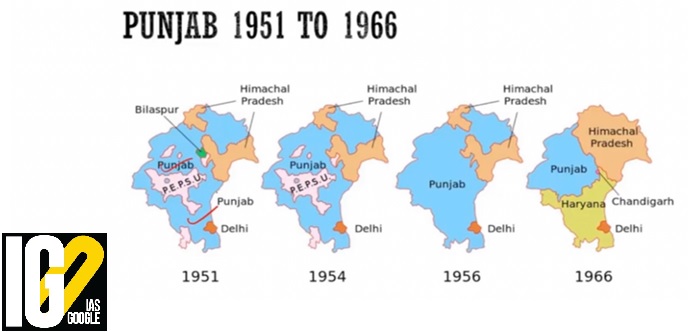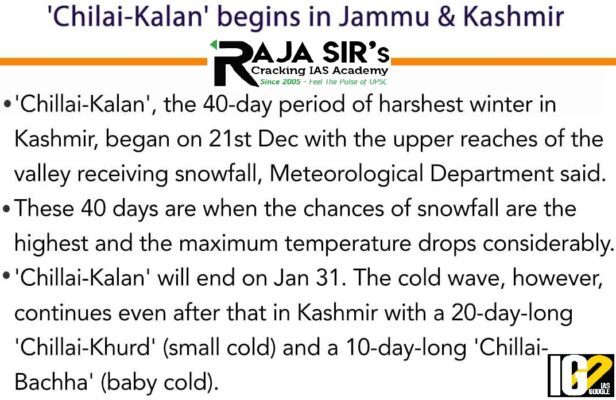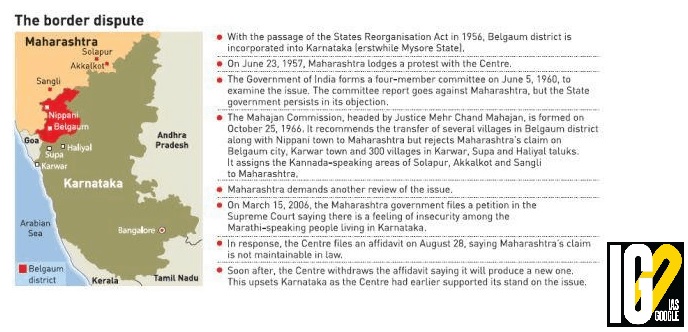- Home
- Prelims
- Mains
- Current Affairs
- Study Materials
- Test Series
Dec 23, 2021
SHIROMANI AKALI DAL TURNS 100: ITS JOURNEY SO FAR, AND PUNJAB’s
Recently, Shiromani Akali Dal (SAD), which was conceived in December 1920, has recently completed 100 years.
Shiromani Akali Dal (SAD - A political party):

 Red Fort
Red Fort

 Highlights:
Highlights:
 Chillai Kalan:
Chillai Kalan:

 History:
History:

- SAD was formed as a volunteer group on December 14, 1920 to free gurdwaras from the control of mahants (priests) appointed by the British government.
- It was aligned with the Congress during the pre-Independence period, starting in the 1930s and continuing in the 1940s.
- Punjabi Suba movement is a political agitation launched by the Sikhs demanding the creation of Punjabi Suba or Punjabi speaking state in the Punjab.
- It started in Punjab soon after the Independence.
- Shiromani Akali Dal was spearheading the movement for a Punjabi speaking state.
- The demand for a Punjabi Suba as a policy position was first presented in April 1948 by Master Tara Singh of the Shiromani Akali Dal.
- The movement was primarily conceived to secure a distinct Sikh political status.
- Those in favour of the demand used to raise the slogan Punjabi Suba Amar Rahe. Those opposing the demand were raising slogans in favour of ‘Maha-Punjab’.
- Later these slogans were banned under Section 144 of CrPC.
- It led to the enactment of the Sikh Gurdwaras Act 1925 which brought gurdwaras under the control of the SGPC.
- Haryana was separated from Punjab in 1966 to become the 17th state of India, with the passage of Punjab Reorganization Act 1966.
- Haryana and Punjab were carved out from State of East Punjab.
- Himachal Pradesh also got some of the territory.
- Provisional capital of both the Punjab and Haryana was the Chandigarh city.
- The state of Haryana was formed on November 1, 1966 on the recommendations of Sardar Hukum Singh Parliamentary Committee that was constituted on September 23, 1965.
- The Central government then formed the Shah Commission to set the boundaries of Punjab and Haryana.
 Red Fort
Red Fort
- The Red Fort or Lal Qila is a historic fort in Old Delhi.
- It had served as the main residence of the Mughal Emperors.
- Emperor Shah Jahan commissioned construction of the Red Fort in May 1638.
- Architect: Ustad Ahmad Lahori
- Architectural style: Indo-Islamic, Mughal
- It is made up of red sandstone.
- Mughal Empire (1638–1771)
- Maratha Empire (1771–1803)
- British India (1803–1947)
- Government of India
- The Red Fort was designated a UNESCO World Heritage Site in 2007 as part of the Red Fort Complex.
- It became a symbol of the 1857 rebellion against the British east India company in which the residents of shahjahanabad participated.
- In 1911 saw the visit of King George V and Queen Mary for the Delhi durbar.
- The INA trials, also known as the Red Fort Trials was held in red fort.
- On 15 August 1947, the first Prime minister of India, Jawaharlal Nehru raised the Indian national flag above the Lahore gate.

- The temple was destroyed by Pakistani forces during their Operation Searchlight in 1971.
- Operation Search light was the codename for a planned military operation by the Pakistan Army to curb the Bengali nationalist movement in former East Pakistan (now Bangladesh) in March 1971.
- The crackdown led to the genocide and the Bangladesh War of Liberation.
- After the war, a small temple was set up at the site for people to offer prayers.
- ‘Ramna’ is derived from Persian word which means “Lawn”.
- It is a symbol of the spiritual and cultural bonding among the people of India and Bangladesh
- It is the second oldest Hindu temple in Bangladesh after the Dhakeshwari Temple.
- The temple is dedicated to the Goddess Kali.
- It was occupied by high officials of the Mughals during early 1600s.
- It is believed that the temple was built by a Hindu sect.
- The temple was ordinary and petite in terms of architecture but it had a tall spire.
- Pakistan army has targeted the political Opposition and the religious minorities of East Pakistan
- They destroyed the temple during Operation Searchlight of 1971.
- A reconstruction of the complex was announced in 2017, when External Affairs Minister of India has inaugurated 15 development projects in Baridhara, Dhaka.
 Highlights:
Highlights:
- The quality of the sheets processed under the new method are favourable then the traditionally processed ones.
- The processing involves coagulation, sheeting and drying.
- Quick drying is achieved by increasing the effective surface area through additional rolling.
- The new method helps get Natural Rubber Sheet (RSS-4) ready within a day, which in turn aids small farmers to dispose of their produce faster.
- The conversion of raw latex into sheet rubber helps them store the produce and sell according to the market situation due to price fluctuation.
- Humans have been exploiting the durable and elastic nature of rubber for making products for over 1,000 years.
- Although early forms of rubber were made from natural sources as demand increased for this material, scientists developed artificial or synthetic rubber in laboratories that mimicked the natural material.
- Natural rubber
- Natural rubber is made by extracting a liquid sap, called latex, from certain types of trees.
- There are over 2,500 types of trees that produce this sap, majority of latex for rubber production stems from the Hevea Brasiliensis tree.
- These trees are commonly found in Southeast Asia.
- Latex is gathered from the trees by making a cut in the bark and collecting the runny sap in cups. This process is called tapping.
- In order to prevent the sap from solidifying, ammonia is added.
- Acid is then added to the mix to extract the rubber in a process called coagulation.
- The mixture is then passed through rollers to remove excess water.
- The layers of rubber are hung over racks in smokehouses or left to air dry.
- Later they will be folded into bales ready for processing.
- Synthetic Rubber
- When natural rubber sources became scarce during World War-1, German scientists developed artificial rubber.
- Although these early forms of rubber were inferior in quality to natural rubber.
- Synthetic rubber is as strong and reliable as natural rubber.
- Synthetic rubber is made by linking polymer molecules together in a laboratory.
- Processing Rubber
- Both natural and synthetic rubber need to undergo a series of processes to turn into a usable product.
- These stages can be adapted according to the intended use of the final product.
- Firstly, chemicals are added to the rubber to make it stable.
- A carbon black filler is added to the rubber mix to improve its strength and durability.
- The rubber is then carefully mixed and allowed to cool, before being shaped.
- It can be shaped by pushing it into rollers or by squeezing it through holes to make hollow tubes.
- Vulcanization
- In order to make rubber strong and durable, it goes through the process of vulcanization.
- This is where the rubber is cooked to create extra bonds or cross-links between the molecules of the rubber, so they don't easily fall apart.
- Charles Goodyear discovered this process.
- After vulcanisation, imperfections are removed from the rubber and it is then molded into the final product.
- Chile is situated along the western seaboard of South America.
- Capital: Santiago
- It extends approximately 2,700 miles from its boundary with Peru, at latitude 17°30′ S, to the tip of South America at Cape Horn, latitude 56° S, a point only about 400 miles north of Antarctica.
- It is bounded on the north by Peru and Bolivia, on its long eastern border by Argentina, and on the west by the Pacific Ocean.
 Chillai Kalan:
Chillai Kalan:
- Chillai-Kalan is the 40-day period of harsh winter in Kashmir that begins December 21 and ends on January 31.
- Chillai Kalan is a Persian term meaning "major cold".
- It is divided into three parts called the Chilas: - The Chillai Kalan, the Chillai Khurd, and the Challai Bache.
- The Chillai Kalan is followed by a 20-day-long Chillai-Khurd (small cold), which lasts till February 19.
- Chillai-Bachha (baby cold), is 10-day-long, from February 20 to March 2.
- During Chillai-Kalan, the weather in Kashmir valley remains dry and cold with minimum temperatures below the freezing point.

- The vehicle has been designed by Defence Research and Development Organisation (DRDO) and manufactured by Ordnance factory Medak and Bharat electronics limited.
- It is designed to meet the tactical and combat requirements of military engineers for carrying out terrestrial and under water surveys in hostile terrains.
- It provides combat engineering support for offensive and defensive operations in plains, desert and riverine terrains.
- The partnership focuses on mainstreaming millets and supporting India in taking lead globally in knowledge exchange using the opportunity of 2023 as an International Year of Millets.
- It will aim at building resilient livelihoods for small-holder farmers and adaptation capacities to climate change and transforming food systems.
- It will strengthen the climate-resilient agriculture for enhanced food and nutrition security in India.
- The outcome of this partnership will be achieved in the following four phases:
- Phase I: Development of a best practice compendium around millet mainstreaming and a scale-up strategy.
- Phase II: Support scale-up of millet mainstreaming through knowledge sharing and intense engagement with select states.
- Phase III: Leverage India’s expertise to support developing countries for millet mainstreaming.
- Phase IV: Working on building capacities for climate-resilient and adaptive livelihood practices.
 History:
History:
- The inter-state dispute between Karnataka and Maharashtra dates back to the period of Independence and the re-organisation of states on linguistic lines in 1956.
- At the time of Independence, the region of Belagavi (the Belgaum) was part of the Bombay presidency.
- The Maharashtra Ekikaran Samiti (MES) came into existence in 1948 with the sole aim of pushing for integration of Belgaum with Maharashtra during the reorganization of states.
- The region was, however, integrated with the state of Mysore (now Karnataka) during re-organisation of states on linguistic lines.
- MES and pro-Marathi groups claim that Belagavi is a largely Marathi-speaking region with many parts being exclusively Marathi speaking and that the region should be a part of Maharashtra instead of Karnataka.
- They claim that nearly 45 percent of the district is Marathi speaking.
- While pro-Kannada groups argue that the Marathi population is only around 35 per cent which is on par with the Kannada-speaking population of the region.
- The Mahajan Commission was formed under Chief Justice Mehr Chand Mahajan in October 1966.
- It was formed to resolve the border dispute between Karnataka and Maharashtra.
- It recommended that 264 villages be transferred to Maharashtra (which formed in 1960) and that Belgaum and 247 villages remain with Karnataka.
- It recommended the exchange of several villages in Belagavi district between the two states, but rejected Maharashtra's claim on Belgaum city.









 Latest News
Latest News
 General Studies
General Studies